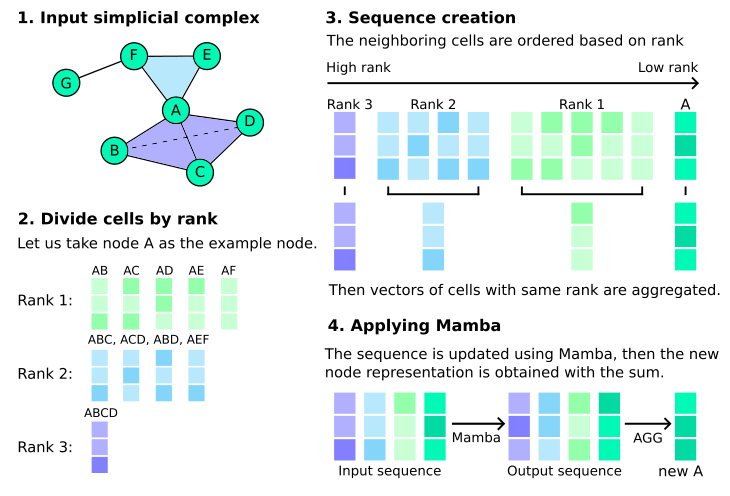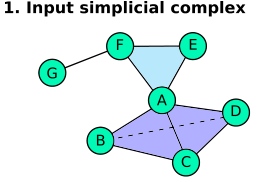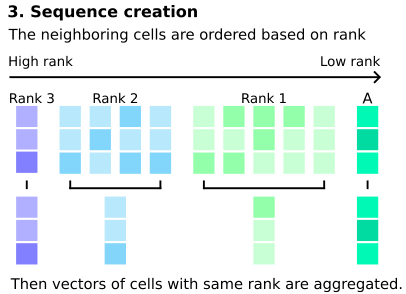Topological Deep Learning with State-Space Models: A Mamba Approach for Simplicial Complexes
Marco Montagna, Simone Scardapane, Lev Telyatnikov·September 18, 2024
Summary
The novel architecture for topological deep learning, focusing on simplicial complexes, introduces a Mamba state-space model-based approach to address limitations of Graph Neural Networks in handling higher-order interactions. This method enables direct communication between all higher-order structures, outperforming state-of-the-art models for simplicial complexes. The paper combines sequence modeling with topological deep learning, using Mamba on simplicial complexes derived from graph datasets. It facilitates efficient information propagation across different ranks in a single step, making it suitable for experiments on various graph datasets converted to simplicial complexes. The proposed approach also evaluates the impact of an efficient batching technique on memory usage, training time, and performance, demonstrating its effectiveness compared to state-of-the-art models for simplicial complexes.
Introduction
Background
Overview of topological data analysis and its relevance to deep learning
Challenges faced by traditional Graph Neural Networks in handling higher-order interactions
Objective
To introduce a new architecture that addresses the limitations of Graph Neural Networks by focusing on simplicial complexes
To present a Mamba state-space model-based approach for topological deep learning
Method
Data Collection
Description of the graph datasets used for the study
Conversion of graph datasets into simplicial complexes
Data Preprocessing
Techniques for preparing simplicial complexes for the Mamba state-space model
Methods for handling higher-order structures in the data
Model Architecture
Detailed explanation of the Mamba state-space model
Integration of sequence modeling with topological deep learning
Description of how the model facilitates efficient information propagation across different ranks in a single step
Evaluation
Techniques for assessing the performance of the proposed model
Comparison with state-of-the-art models for simplicial complexes
Results
Impact of Efficient Batching
Analysis of memory usage, training time, and performance improvements with efficient batching
Experimental Results
Presentation of results on various graph datasets converted to simplicial complexes
Discussion of the model's effectiveness in handling higher-order interactions
Conclusion
Summary of Contributions
Recap of the novel architecture and its advantages over existing models
Future Work
Potential areas for further research and development
Implications
Discussion on the broader impact of the proposed method in the field of topological deep learning
Basic info
papers
machine learning
artificial intelligence
Advanced features
Insights
How does the proposed approach evaluate the impact of an efficient batching technique on memory usage, training time, and performance?
What does the paper combine to enable direct communication between all higher-order structures in the context of simplicial complexes?
What is the main focus of the novel architecture for topological deep learning mentioned in the text?
How does the Mamba state-space model-based approach address limitations of Graph Neural Networks in handling higher-order interactions?




